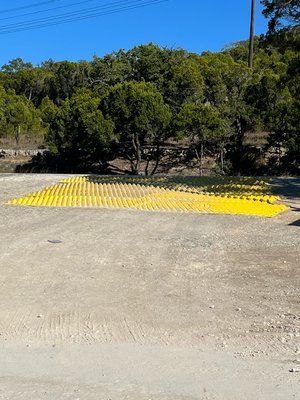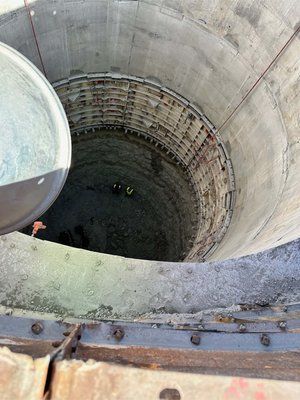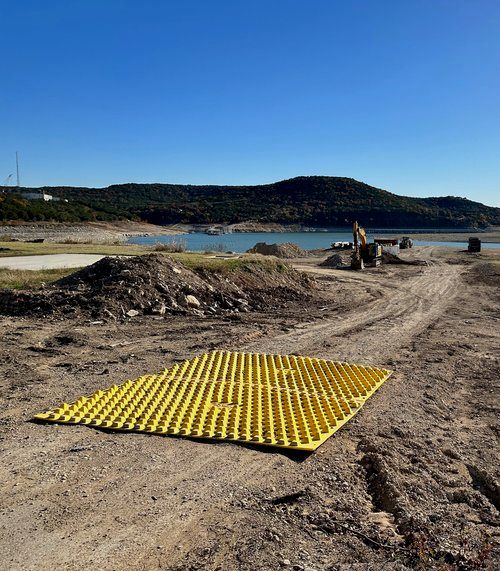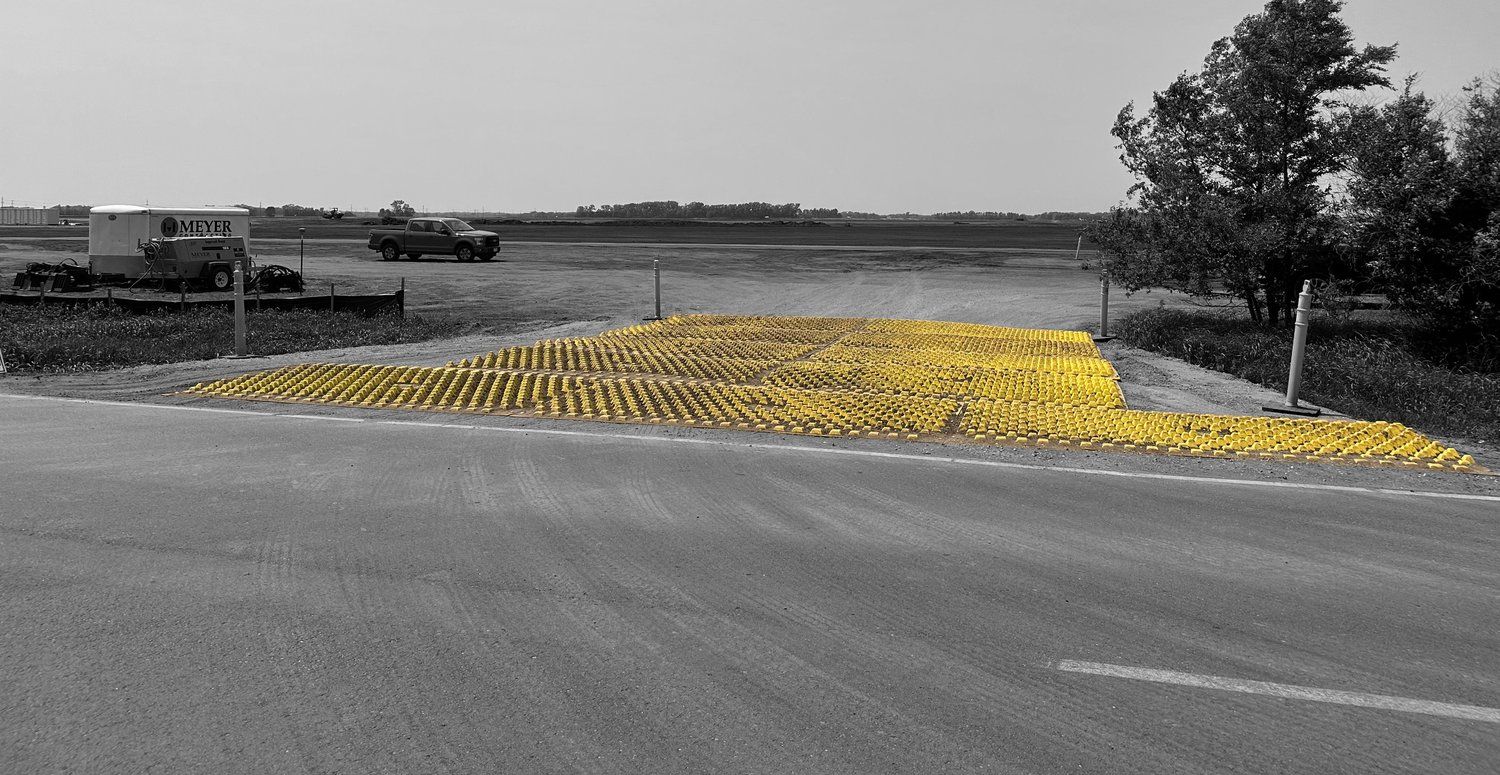Brushy Creek Regional Utility Authority Contractor Uses FODS Trackout Control System to Protect Lake Travis Waterway
Located on the north end of the Austin Metro area, the Brushy Creek Regional Utility Authority (BCRUA) is a cooperative partnership between Cedar Park, Leander, and Round Rock, some of Texas's fastest-growing populations. The authority treats and distributes water from the Lower Colorado River Authority and distributes to residents in the area. Planned by BCRUA since 2007, the $224.8 million Phase 2 Raw Water Delivery System Project is now underway to improve drought resilience and increase capacity from the current 32 million up to 106 million gallons per day to prepare for future growth.
The Lead Designer, Schabel Engineering, has developed a deep-water intake system with two lake taps with multi-level intake screens to replace the existing floating intake. The lake taps will lead to a 9,000-foot long, 10-foot diameter Gravity Raw Water Intake Tunnel, which supplies water from Lake Travis to a new 145-Million Gallons per Day (MGD) pump station adjacent to the existing Cedar Park Water Treatment Plant. The project also includes a new Maintenance Building and chemical feed system to treat the water before pumping to improve water quality and prevent the spread of invasive species. The Pump Station will send water through a Transmission Tunnel to connect to the existing Transmission Main on the north side of Lake Travis.
An experienced team of industry leaders has been assembled to complete the massive undertaking. Construction was awarded to a Joint Venture between Thalle and Sak, with a plethora of combined experience spanning Marine Construction, Treatment Plants & Pump Stations, Utility, and Pipeline projects. The engineering team includes Schnabel Engineering, K Friese + Associates, and a Joint Venture between Walker Partners and Freese and Nichols. For the engineering team, one of the environmental challenges in the BCRUA project is preventing sediment and construction debris from contaminating the nearby Lake Travis. Given the project's location, managing the environmental impact of the construction project is a high priority to preserve the lake water quality for ecological and community health. In addition to designing the structures, pipelines, and water intakes, the engineering team will develop a comprehensive Storm Water Pollution Prevention Plan (SWP3) to protect water quality during construction activities.
Storm Water Pollution Prevention Plans (SWP3) identify potential contamination sources and outline Best Management Practices or BMPs to address each potential contamination source. Soil sedimentation is the most common source of water contamination, and during construction activities, disturbed soil becomes unstable, leading to increased sedimentation during rain events if not properly mitigated. To mitigate sediment and debris deposited on exterior roadways, site operators will deploy a street sweeper, often daily, to capture any residual sediment and dust that escapes onto the road. In addition, Stabilized Construction Exit BMPs are deployed at each point where vehicles exit from the construction zones onto active roadways. The Stabilized Construction Exits work to clean vehicle tires, thus containing sediment and debris within the job site.
Throughout this project, construction and engineering teams seek out the best solution for each challenge and promote the use of effective erosion and sediment controls. The FODS Trackout Control Mat System has been selected as the Stabilized Construction Exit BMP to mitigate vehicle tracking at site entrances. The FODS System consists of 12' wide by 7' long HDPE panels, which have a pattern of protruding pyramid-shaped structures on the surface that flex the tires and dislodge debris and sediment trapped between tread lugs preventing track-out from leaving sit. The FODS system is an effective, modern solution to vehicle tracking that can be deployed over various substrates. Compared to traditional aggregate-based entrances, the FODS system provides several benefits which improve both environmental compliance and safety. FODS entrances are designed to trap and hold dirt, preventing contaminants from spreading into the surroundings or nearby the water bodies. These reusable construction entrances form an effective barrier between the construction activities and the lake, mitigating the risk of water contamination.



The FODS system is a highly effective solution compared to traditional aggregate-based techniques. The FODS system also promotes proactive entrance maintenance, reducing time spent on sweeping. All Construction Entrance BMPs require some maintenance. Standard rock entrances will become compacted and must be refreshed after each rain event or through regular use. Maintenance of a conventional entry requires additional material to be delivered to the site to recreate a rough surface. The FODS system is a rigid structure that does not become compacted and is maintained by cleaning with street sweepers, which is commonly conducted proactively as part of the regular schedule. By installing FODS as the Stabilized Construction Exit BMP, all site entrances are proactively maintained and kept in optimal condition. Through third-party testing, FODS has been proven to reduce sweeping by 59% compared to traditional rock exits, drastically reducing the material and labor costs spent on maintenance.
The FODS system also helps reduce safety risks at the construction site exits. When installing a FODS entrance, the contractor does not introduce additional aggregate at the site entrance, reducing the risk of rock and aggregate being tracked onto active roadways or trapped in dual tire axles. The aggregate-free solution helps to improve safety for all construction vehicles as well as through traffic.
In the colossal Phase 2 Raw Water Delivery System Project, incorporating FODS LLC's reusable construction entrances presents a unique blend of sustainable innovation and operational efficiency. Not only do these entrances help streamline construction activities, but they also align closely with the project's broader commitment to environmental protection. By effectively controlling site debris and sediment, FODS technology prevents runoff into Lake Travis, thus safeguarding the very water source the infrastructure project seeks to harness. Moreover, this sustainable solution aligns perfectly with Round Rock's advanced financial planning, as the cost and time savings generated will be a boon for project execution. By integrating FODS LLC's reusable construction entrances into their methodology, BCRUA, Thalle Construction Co., Inc., and SAK Construction, LLC Joint Venture are setting a precedent for other infrastructure projects to follow, showcasing how sustainable practices and operational efficiency can work hand in hand for the betterment of our communities and the environment.
ABOUT FODS, LLC.
Based in Centennial Colorado, FODS is working to replace ineffective and costly traditional rock stabilized construction entrances, saving you time and money. Our proprietary mat design works to effectively remove debris from your vehicle tires without damaging the tire or the ground’s surface. We provide the only durable, reusable, and environmentally friendly trackout control system currently available on the market. FODS Vehicle Trackout Controls BMP mats are 100% Made In the USA and 100% recyclable.
To find out more information on how we can help your project stay on schedule and in compliance contact 844-200-3637 or email us at info@getfods.com.

